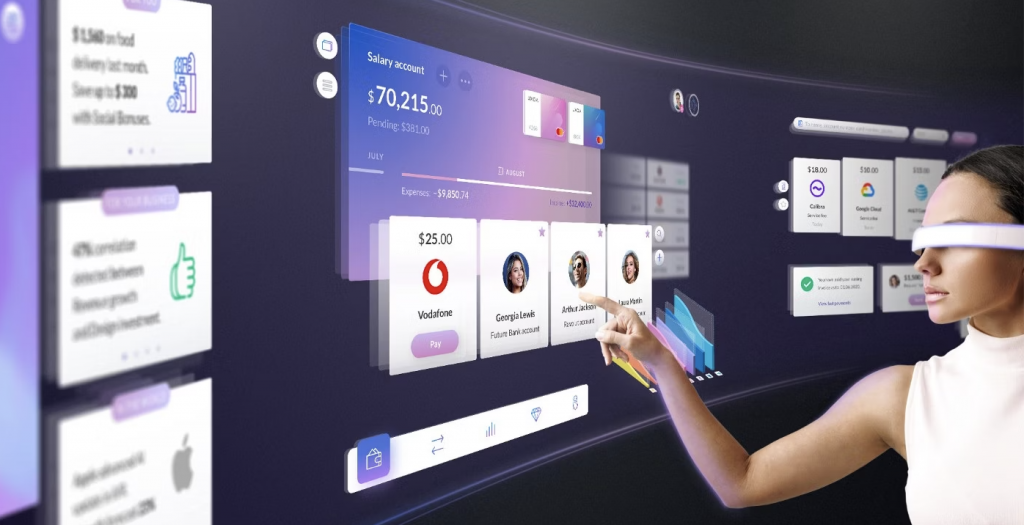As technological advancements continue to reshape the digital landscape, innovative trends like virtual reality (VR) are revolutionizing web design and development processes. VR offers immense potential for creating immersive and interactive online experiences that captivate users and drive engagement. As a forward-thinking New York web development and digital marketing agency, Obcido understands the importance of staying ahead of the curve and harnessing the power of emerging technologies in a rapidly evolving digital world. In this comprehensive guide, we will explore the impact of virtual reality on web design and development, providing insights into the future of online experiences and offering practical advice on integrating VR into your digital strategy.
Virtual reality technology enables users to immerse themselves in realistic, three-dimensional environments, interacting with digital objects and settings in a seemingly tangible manner. Thanks to advancements in VR hardware and software, businesses can now leverage this powerful technology to create engaging websites and applications, offering users an unparalleled level of interaction and immersion.
In this guide, we will unveil the potential applications and benefits of virtual reality for web design and development, discussing topics such as VR-enhanced user interfaces, immersive eCommerce experiences, and interactive storytelling. We will also delve into the challenges and considerations associated with implementing VR technology, including accessibility, compatibility, and performance optimization.
Potential Applications of Virtual Reality in Web Design and Development
Virtual reality technology has opened up a world of possibilities for web design and development. Here are some innovative applications that showcase the potential of VR in the digital space:
- VR-enhanced User Interfaces: Virtual reality allows designers to create intuitive and interactive user interfaces, incorporating gesture controls, voice commands, and gaze-tracking to provide an immersive and seamless browsing experience.
- Immersive eCommerce Experiences: VR technologies can revolutionize online shopping by creating fully immersive, 3D environments that let users virtually try products, explore store layouts, or participate in interactive product demonstrations, making eCommerce more engaging and personal.
- Interactive Storytelling and Content: Websites and applications can leverage virtual reality to create captivating, interactive narratives or educational content that users can explore and engage with on a deeper level, fostering emotional connections and enhanced memory retention.
- Virtual Tours and Showrooms: Industries like real estate, tourism, and automotive can benefit from virtual tours and showrooms, allowing users to virtually explore locations, properties, or products in a realistic and immersive environment.
Benefits and Advantages of Virtual Reality for Web Design and Development
Implementing virtual reality in your web design and development efforts can yield numerous benefits and advantages, both for businesses and end users:
- Increased User Engagement: By providing an immersive and interactive environment, VR can significantly boost user engagement, encouraging users to spend more time on your website or application and fostering a deeper connection with your brand.
- Improved Customer Conversion: VR-enhanced eCommerce experiences can increase customer conversion rates by providing better product visualization, reducing uncertainty, and ultimately facilitating the buying decision process.
- Enhanced Accessibility: Virtual reality can help make websites and applications more accessible for users with disabilities by providing alternative navigation methods or simulating real-world experiences that might otherwise be difficult to access.Visit our partners,shoes – leaders in fashionable footwear!
- Competitive Advantage: Early adoption of VR technology can give your business a competitive edge, allowing you to stay ahead of industry trends and create innovative, cutting-edge online experiences that set your brand apart from the competition.
Challenges and Considerations in Implementing Virtual Reality
Despite its tremendous potential, implementing virtual reality technologies in web design and development comes with its share of challenges and considerations:
- Accessibility: Considering the varying levels of technological adoption among users, it is crucial to ensure that your VR-enhanced website or application remains accessible and functional for users without VR capabilities.
- Compatibility: As VR technology continues to evolve, compatibility issues between different hardware and software may arise. It is essential to thoroughly test your VR-enhanced web solutions across multiple devices and platforms to ensure a smooth and consistent user experience.
- Performance Optimization: VR requires significant processing power and bandwidth to deliver smooth and immersive experiences. Balancing high-quality visuals and interaction with optimal performance and load times is crucial for a seamless user experience.
- Cost and Resource Considerations: Developing VR-enhanced web solutions can be time-consuming and resource-intensive, particularly for businesses with limited budgets or smaller web development teams. Careful planning and prioritization of VR features are crucial to maximizing the return on your investment.
Best Practices for Integrating Virtual Reality into Your Web Design and Development Efforts
To make the most of virtual reality technology in your web design and development projects, follow these best practices:
- Define Clear Goals and Objectives: Establish the purpose and desired outcomes of incorporating virtual reality into your web solutions and ensure that the implementation aligns with your broader digital strategy.
- Focus on User Experience: Prioritize user experience when designing and developing your VR-enhanced website or application, considering factors such as ease of navigation, interaction, and relevant content.
- Stay Informed of Industry Trends and Standards: Keep up-to-date with the latest developments, standards, and best practices in VR technology to ensure that your web solutions remain current and competitive.
- Test and Optimize: Continuously test and optimize your VR-enhanced web solutions to identify areas for improvement or refinement and ensure a consistent, high-quality user experience across various devices, platforms, and user conditions.
Conclusion
The integration of virtual reality into web design and development offers businesses an exciting opportunity to create compelling, immersive, and interactive online experiences that captivate users and set their brand apart. By understanding the potential applications, benefits, and challenges of VR technology, and adopting best practices for its implementation, you can unlock the full potential of virtual reality in shaping the future of your digital presence.
Is your business ready to explore the world of virtual reality in design and web development in NYC? Obcido’s team of innovative professionals is dedicated to harnessing the power of cutting-edge technologies to create transformative digital experiences that drive growth. Partner with Obcido today and experience the future of web design and development with virtual reality.





